AEC Marshal – a fine 1972 example
Posted by Chris Graham on 16th December 2022
The Marshal was one of the last lorries to wear the AEC badge. Bob Weir went to Shropshire to meet Lewis Weaver and his fine 1972 example.
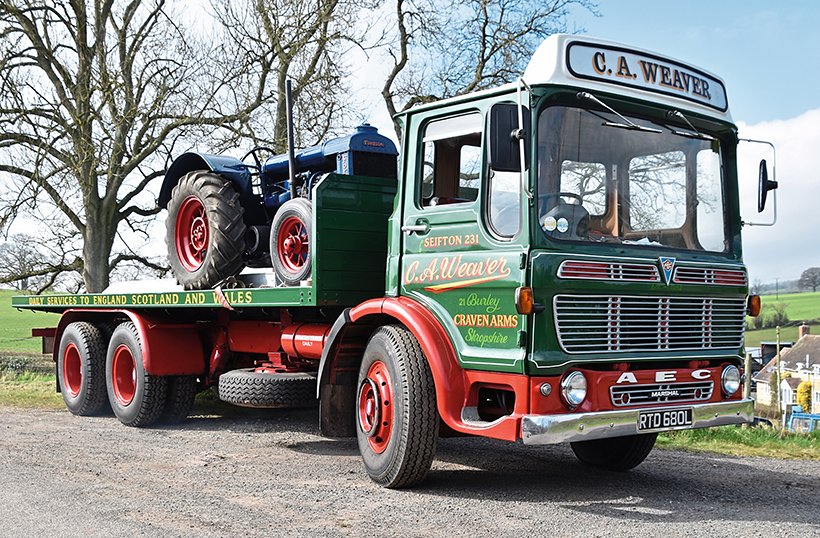
The Marshal’s clean lines were popular back in the early 1970s.
Mention the old county of Salop and farming and haulage immediately come to mind. Shropshire is one of the oldest counties in England, and was the birthplace of the industrial revolution. Collecting old lorries is a popular pastime for many in the county, and there are plenty of treasures tucked away in local barns.
Lewis Weaver was born and raised in the county and runs his own haulage firm. This year he is celebrating the 70th anniversary of a business that was originally started by his father.
“Charles Albert Weaver started the business in 1952 with a GMC (General Motors Corporation) flatbed,” he explained. “My father had left school when he was 13 and, like a lot of lads of his age, went to work on a farm. He then joined contractor Arthur Jones in Ludlow and started driving lorries. He did the rounds with local hauliers until the beginning of the Second World War.

The fully tilting all-steel Leyland Group Ergomatic cab was popular with owners and the full air braking system uses spring brake units for parking and secondary braking.
“After the war there were plenty of army surplus lorries kicking around, and Arthur Jones sold my father a GMC four-wheel flatbed for £150, which was a lot of money back then. My father started hauling quarry stone and lime. He used to go to the lime-spreader boys and shovel the lime off the flat onto the spreader. He then went contracting with Adam Lythgoe based at Clitheroe, in Lancashire.”
Agricultural lime has been popular with farmers for years and comes in several forms. It is mainly used to neutralize the acidity in the soil, boosting crop production.
“Adam Lythgoe ran several quarries in the Shropshire area,” Lewis recalls. “The firm was encouraged by father and, after 16 months, he bought his first GMC six-wheeler lorry. The business quickly expanded, and he was soon running several GMC lime-spreaders, along with a Canadian Ford. The business was run from home, and the family has been here since 1947.”
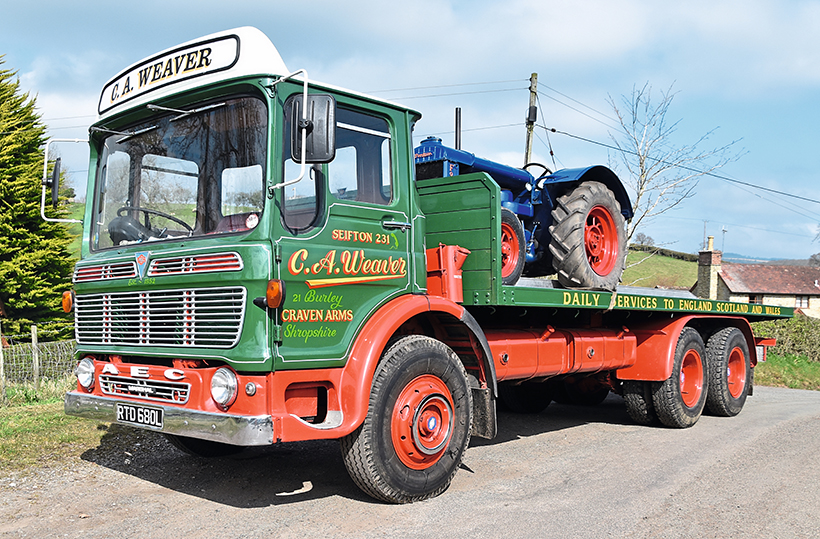
The AEC name actually disappeared from commercial vehicles in 1977, but the Leyland Marathon was built at the Southall plant until British Leyland closed it in 1979.
Lewis admits he has certainly seen some changes in his forty-plus years in haulage. “My father had to develop the yard as we were located right out in the country, and there wasn’t much of a driveway in the early years,” he said. “The property had previously been used as a wheelwright shop. Wheelwrights were part of village life back then, and dad had to improve access as the lorries got larger.”
Lewis remembers that when he left school in the hot summer of 1976, he worked on a farm for four years. “I then got my heavy goods licence and a job with a local tyre fitter,” he recalls. “By this stage my father was looking to step back from the day-to-day running of the firm, so he asked me to gain some experience before taking over the business. A local job came up at Craven Arms, and I drove four-wheel flats until 1988.
“When I started working for the business, we were transporting corn and stone. I managed to get some work hauling bark and woodchips, and we’ve been doing it ever since. Unfortunately, father passed away recently, but he did live to the grand old age of 97.”
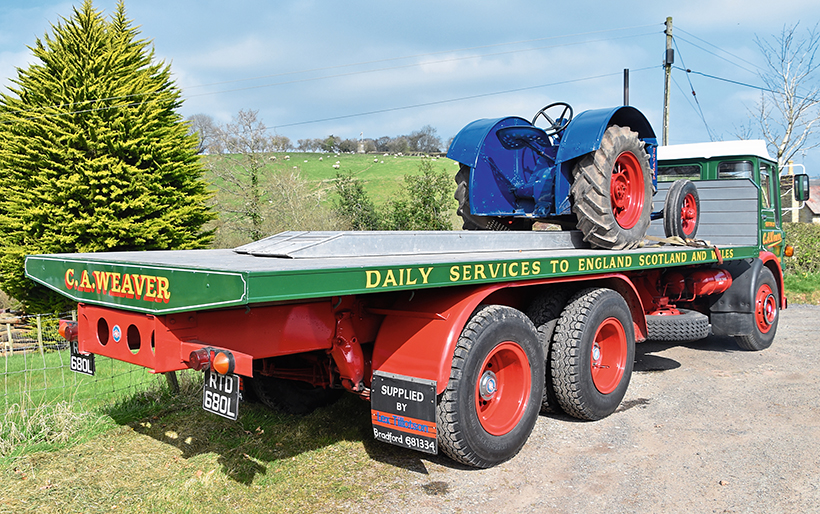
Lewis often shows the Marshal with a tractor on the flatbed. This particular machine is a rare 1930s Fordson N ‘water-washer’ built at Dagenham, Essex.
A large number of lorry marques have worked under the banner of ‘CA Weaver’ over the last 70 years, including several haulage classics. “Apart from Marshal, we used several Seddon lorries and a Diamond T,” he said. “In later years, like a lot of hauliers, we started driving European lorries like Volvo. I have kept several trucks from that era, like the F7, which are now in various stages of restoration.”
Lewis has been interested in old machinery since he was a teenager and, like a lot of enthusiasts, first cut his teeth on stationary engines. “I must have owned 50 stationary engines at one point, and was also interested in steam power,” he explained. “When I was growing up, some of the local businesses like Bishop Brothers of Burley were still using steam engines for threshing. I have always been fond of steam and am a section secretary with the County of Salop Steam Engine Society (COSSES).”
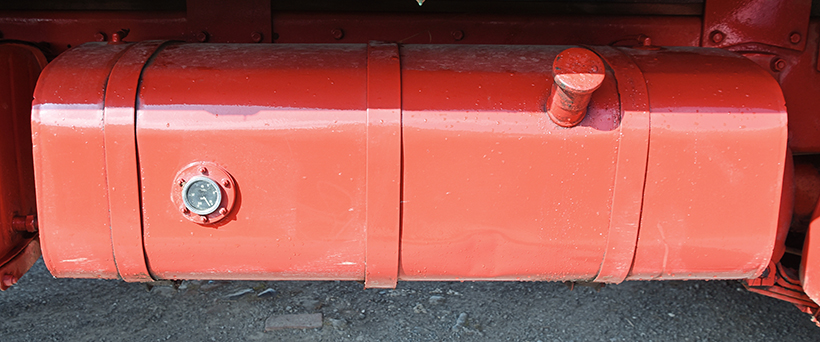
The detailing on the lorry is superb.
Lewis recalls that, back in the 1970s, his father was running up to eight AEC lorries, including Marshals and one Mercury. “I acquired RTD 680L in June 2015, from Cheshire enthusiast Geoff Newsome,” he said. “I believe I am the sixth owner. The lorry was originally new in 1972, to Williams Porthmadog Red Garage, and made regular trips to London hauling granite and slate. It was sold after two years to EWH Williams of Llanwnda near Caernarfon, in North Wales, and was painted in red and dark blue colours.
“When we got the lorry back to Shropshire, I realised I had seen the AEC before in the guise of a bulk tipper. It had been exhibited as a tipper around the time of the millennium by Harry Holmes. Enthusiast Ray Banner also owned the lorry at one point.”
Although the Marshal was in fair condition given its age, Lewis remembers that it still required some work. “We had to weld-up the cab, as one of the doors had gone,” he recalls. “This was quite common with 1970s lorries. The cab had also been replaced at some point with an ex-army cab. I don’t know who carried out the work, but I did have some original photos and noticed there were a few differences between the original and current cabs. We also came across some khaki paint when we were rubbing down the paintwork. Fortunately, the floor was in good condition, which saved a lot of work.”
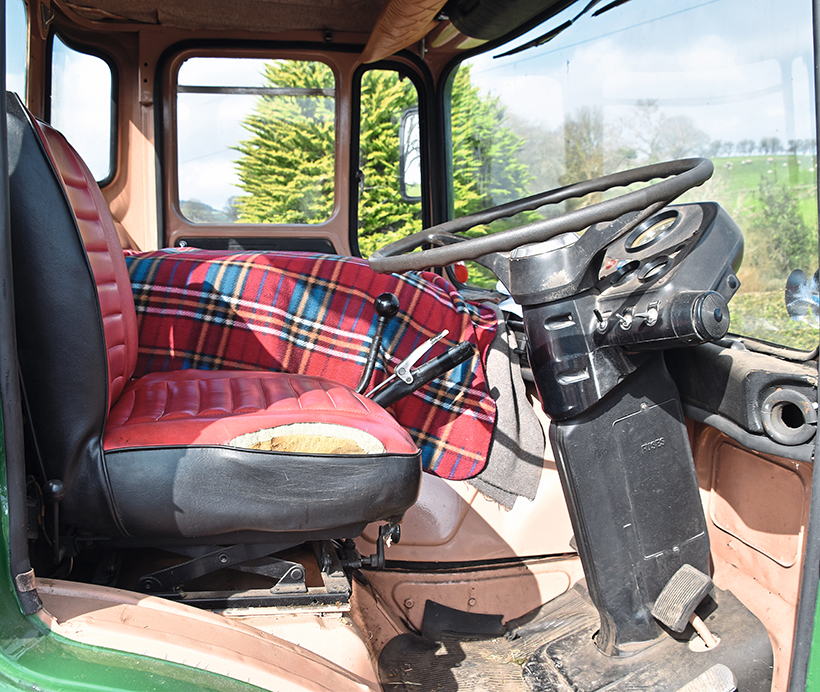
A bit spartan by modern standards, but the Ergonomic cab gives a superb view of the road.
Mechanically, there were also some issues, and the lorry’s engine had been replaced. “Geoff Newsome had taken out the old engine, and fitted a new one,” Lewis recalls. “The story goes, he was coming back from a show and the power steering pipe broke. Luckily, he was only 20 miles from home, because the engine then seized up.
“Apparently, what had happened was that the power steering gear on the end of the pump had split and come out through the engine casing. Luckily, one of Geoff’s friends had recently acquired an AEC fire appliance. He was only interested in the cab, and Geoff was able to come to an arrangement for the engine. This was a good bit of business, as the engine only had 16,000 miles on the clock.”
The last Marshal lorry CA Weaver ran for commercial purposes was parked up in 1989. “Looking back, the Marshal was OK to drive, if a bit on the slow side,” said Lewis. “The lorry could also have issues with the transmission, particularly if a driver was new to the vehicle and a bit clumsy with gear changes. The casing was only made of alloy and there were just two bolts holding it to the side of the engine. If one of the bolts worked loose or came out, it would sometimes break off when you were trying to make a gear change, and the gear stick would disappear down the hole. The lorry would then come to a grinding halt, which happened several times.”
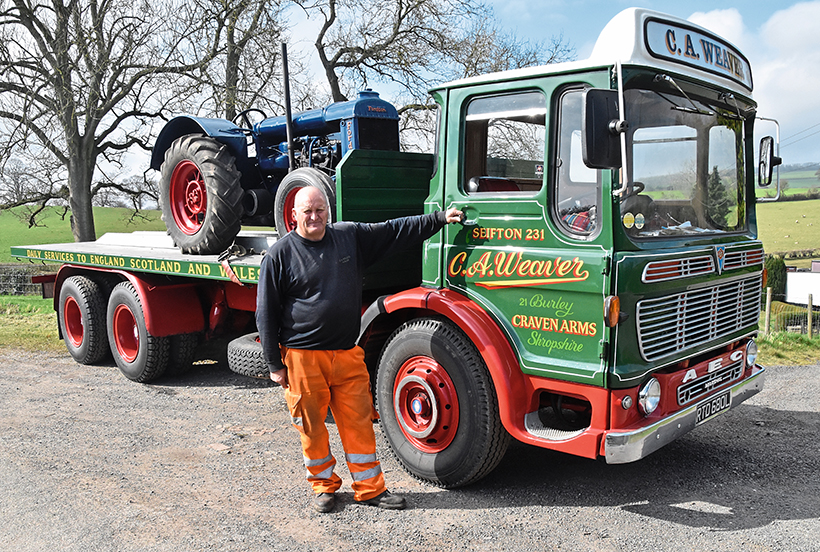
Lewis has been involved with transport for over 40 years, and still likes a turn behind the steering wheel.
That said, Lewis has good memories working with British lorries. “We were generally happy to use British made lorries but, by the end of the 1970s, most hauliers were switching to the likes of Volvo, and we eventually followed suit. Fortunately, there are plenty of British lorries still kicking around, and we see our fair share on club road runs.”
Lewis is a big fan of vintage vehicle shows and has been involved with COSSES since the early 1970s. “I haven’t missed many shows down the years,” he said. “My father used to take me when I was very young, back in the days when the annual rally was held just up the road at Church Stretton. I am now commercial vehicle section secretary, responsible for running the annual road runs.”
The annual show was cancelled for two years due to Covid restrictions, but the club committee was determined to celebrate the club’s 60th anniversary in 2021. “I organised two runs over the weekend,” Lewis recalls. “The drive up to the Ponderosa café near Horseshoe Pass by Llangollen, was a great success. The round trip came to 81 miles, and 33 entrants took part. On the second day we went via Wrexham and Whitchurch, to the Midway Truck Stop at Prees Heath. We came back down the A41 to Newport before heading home. The weather stayed fair, and everybody had a good time.”
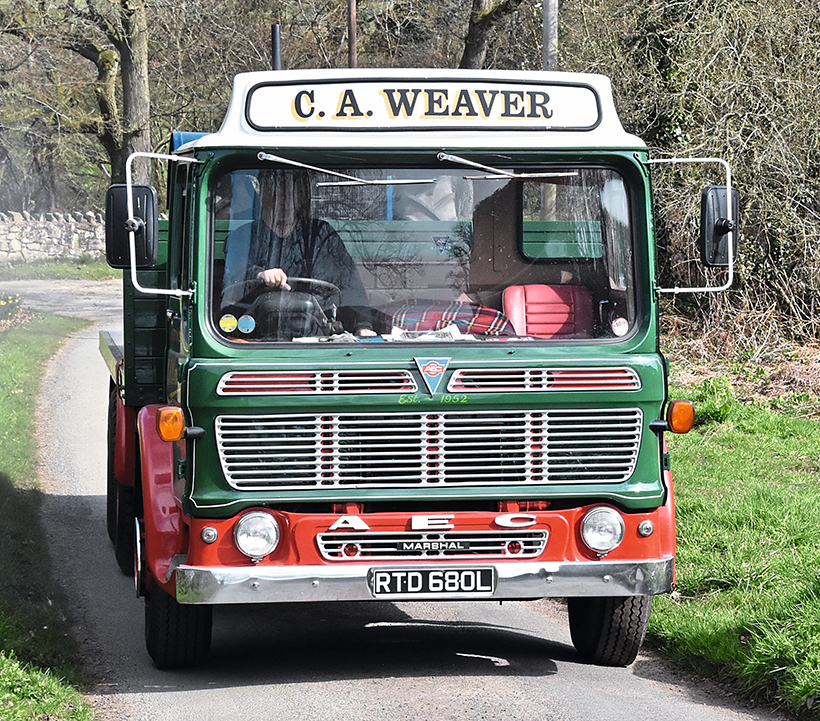
Lewis behind the wheel of RTD 680L. A lot of the local roads are single lane only, and lorries can be a real handful, particularly during the winter months.
As we were finishing, I asked Lewis what 70 years in haulage meant to the Weaver family. “A lot of history, because we’ve done many different jobs over the years and I’ve learnt what it takes to organise things properly,” he said. “This really was a family affair, and my father never fully retired. He drove his Volvo lorry until he was 82, even doing the occasional trip to London.
“I enjoyed a lot of the commercial vehicles we used in the business, but don’t get so much driver satisfaction out of newer types like my Volvo FM. I’ll certainly keep the Marshal because that was my father’s favourite lorry and I intend to keep driving for the foreseeable future.”
This features comes from the latest issue of Heritage Commercials, and you can get a money-saving subscription to this magazine simply by clicking HERE

Previous Post
Rusty but interesting stationary engines on Suffolk coast
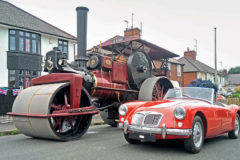
Next Post
Steaming at Platinum Jubilee street party!



